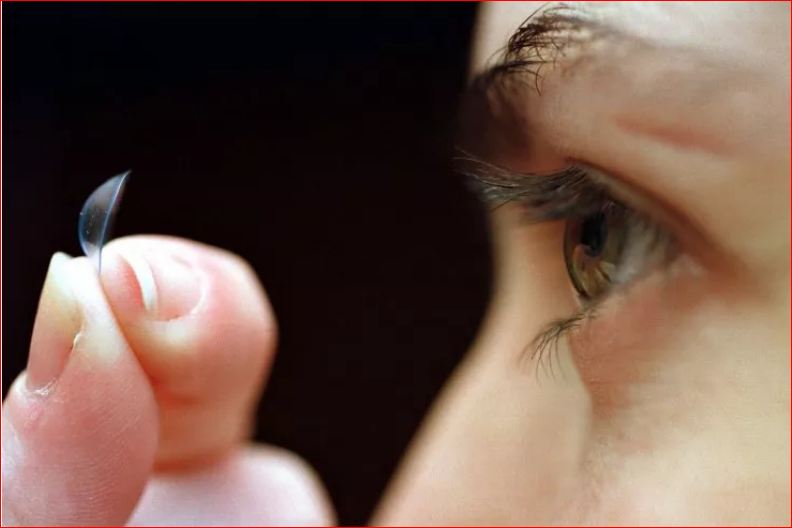Researchers at the Korea Electrotechnology Research Institute (KERI) and Ulsan National Institute of Science and Technology (UNIST) have developed a 3D printing method for smart contact lenses that can print functional micro-patterns on non-planar substrates without the need for electricity.
The key to the process is the use of a meniscus, the curved surface of a liquid caused by the adhesive force between the liquid and the solid surface.
The process involves the use of Prussian blue ink, which solidifies through solvent evaporation in the meniscus created between the micronozzle and the substrate. The acidic-ferric-ferricyanide ink meniscus forms on the substrate when the ink-filled micronozzle and substrate make contact.
The precursor ions Fe3+ and Fe(CN)3 interact spontaneously at room temperature, causing the ink (FeFe(CN)6) to crystallize heterogeneously inside the meniscus on the substrate as the solvent evaporates.
To achieve consistent printed patterns, the crystallization of FeFe(CN)6 during the printing process must be carefully regulated. The phenomenon causes edge-enhanced crystallization of ink and enables the technology to create micro-patterns with a resolution of 7.2 microns on curved as well as flat surfaces.
The printing method is particularly useful for contact lenses, as standard electroplating methods require a conductive substrate when voltage is applied. By utilizing the meniscus phenomenon, there are no limitations on the substrate that can be used.
The technology has potential applications in battery and biosensor development, but the primary focus is on using micro-patterns for augmented reality (AR) navigation. Dr. Seol Seung-Kwon of KERI said, “Our achievement is a development of 3D printing technology that can print functional micro-patterns on non-planner substrate that can commercialise advanced smart contact lenses to implement AR. It will greatly contribute to the miniaturisation and versatility of AR devices.”
The development of this 3D printing method is significant as it addresses the challenges associated with printing functional micro-patterns on non-planar substrates. The meniscus phenomenon opens up new possibilities for printing technology, enabling the creation of complex micro-patterns on curved surfaces. This breakthrough could have a significant impact on the future of AR technology, allowing for the miniaturisation and versatility of devices.
The use of ink and solvent evaporation to create functional micro-patterns is a cost-effective and eco-friendly alternative to other printing methods. The method has the potential to be used in a variety of industries and could lead to new applications in the future.
The development of this technology also highlights the importance of research and development in the field of 3D printing. As the technology continues to evolve, it will become increasingly important to explore new methods and techniques to improve the process and expand its capabilities.
In conclusion, the KERI-UNIST research team’s development of a 3D printing method for smart contact lens micro-patterns is a significant breakthrough in the field of printing technology. The use of the meniscus phenomenon to create functional micro-patterns on non-planar substrates has the potential to revolutionize the way we approach printing technology, enabling the creation of complex patterns on curved surfaces.
The technology’s primary focus is on AR navigation, but it has potential applications in a variety of industries. As 3D printing technology continues to evolve, it is essential that research and development in the field continues to push the boundaries of what is possible.
